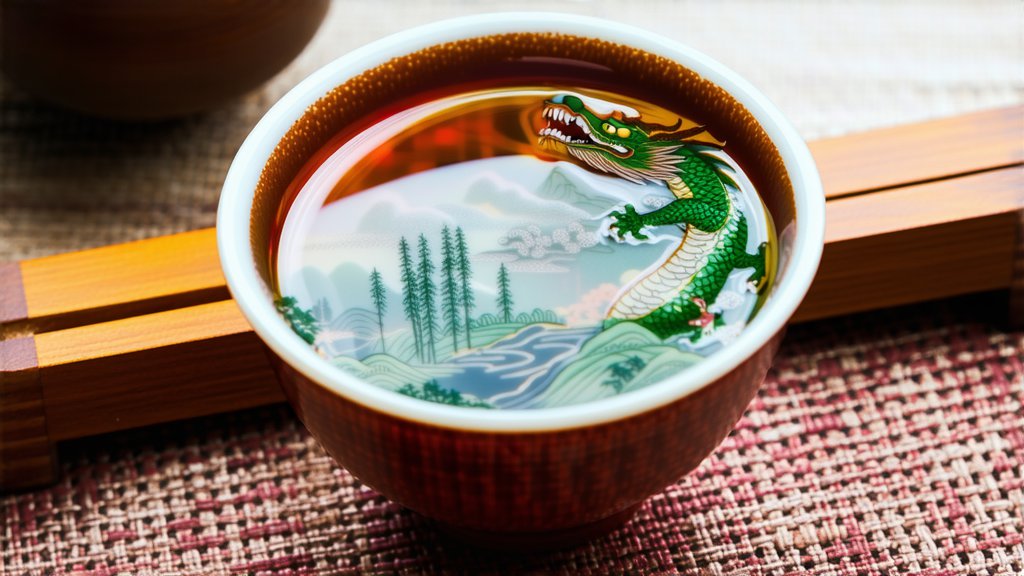
Introduction
Dragon Well tea, also known as Longjing, is one of China's most revered green teas, celebrated for its exquisite flavor and rich cultural heritage. This tea variety has been cherished for centuries, not only for its refreshing taste but also for the intricate craftsmanship involved in its production. In this article, we will delve into the history, types, production methods, brewing techniques, and appreciation methods of Dragon Well tea, offering international readers an insightful journey into the world of Chinese tea culture.
History of Dragon Well Tea
The origins of Dragon Well tea can be traced back to the Ming Dynasty (1368-1644), with its fame further solidified during the Qing Dynasty (1644-1912). According to legend, the tea was highly favored by Emperor Qianlong, who visited the region and was so impressed by the quality of the tea that he awarded it the title of "Imperial Tea." The tea is named after the Dragon Well Village near West Lake in Hangzhou, Zhejiang Province, where the tea bushes are cultivated under optimal conditions, benefiting from the unique microclimate and fertile soil.
Types of Dragon Well Tea
While Dragon Well tea is primarily associated with the region around West Lake, there are several subcategories within the Dragon Well family. The most renowned among them is Xihu Longjing, which comes from tea gardens located on the western shore of West Lake. Other notable varieties include Qiandao Longjing from Qiandao Lake area, and Yueqiao Longjing from Yueqiao District. Each type carries its own distinct characteristics, influenced by the terroir and cultivation practices.
Production Methods
The production of Dragon Well tea involves meticulous hand-picking and processing techniques that have been passed down through generations. The process begins in early spring when the tender buds and young leaves are carefully selected. These are then subjected to a series of steps including pan-firing, rolling, and drying.
-
Pan-firing: Freshly picked leaves are immediately stir-fried in large woks over high heat to halt oxidation. This step requires precise control of temperature and timing to preserve the natural flavors and aromas of the tea.
-
Rolling: After pan-firing, the leaves are gently rolled by hand or with special machines to shape them into the characteristic flat and smooth appearance of Dragon Well tea.
-
Drying: The rolled leaves are then dried to reduce moisture content and enhance their shelf life. This step is crucial in achieving the desired texture and flavor profile of the final product.
Brewing Techniques
To fully appreciate the nuances of Dragon Well tea, proper brewing techniques are essential. Here is a step-by-step guide to brewing the perfect cup:
-
Water Quality: Use fresh, filtered water at a temperature of around 75-80°C (167-176°F). Avoid using boiling water, as it can scorch the delicate leaves and result in a bitter taste.
-
Tea Quantity: For a standard 200ml (6.76 oz) cup, use approximately 3 grams (0.106 oz) of Dragon Well tea leaves. Adjust the quantity based on personal preference and the size of the teapot or cup.
-
Pre-warming: Warm the teapot or cup with hot water before adding the tea leaves. Discard the pre-warming water to ensure a clean canvas for the brewing process.
-
Infusion: Add the tea leaves to the pre-warmed teapot or cup and gently pour in the hot water. Allow the tea to steep for about 2-3 minutes. Oversteeping may result in a bitter brew, so it's important to monitor the time closely.
-
Multiple Infusions: Dragon Well tea can be infused multiple times, with each infusion revealing different layers of flavor. The first infusion typically yields the most intense aroma and taste, while subsequent infusions offer subtler nuances.
Appreciation Methods
Appreciating Dragon Well tea goes beyond simply savoring its taste; it involves engaging all the senses to fully experience its elegance. Here are some key aspects to consider when appreciating this exquisite tea:
-
Aroma: Before tasting, take a moment to inhale the fragrant aroma of the brewed tea. Dragon Well tea is known for its fresh, grassy scent with hints of chestnut and a subtle sweetness. Close your eyes and breathe deeply to capture the full spectrum of aromas.
-
Color: Observe the color of the brewed tea. Dragon Well tea typically exhibits a pale yellow-green hue, which is a testament to its high-quality processing. The clarity and brightness of the liquid can also indicate the freshness and purity of the tea.
-
Taste: Sip the tea slowly, allowing it to coat your palate and savor the complex flavors. Dragon Well tea offers a harmonious balance of sweetness, umami, and a lingering aftertaste. Notice how the flavors evolve with each sip and between infusions.
-
Texture: Pay attention to the texture of the tea in your mouth. Dragon Well tea is known for its smooth, velvety mouthfeel, which contributes to its overall sensory experience. The absence of any astringency or bitterness is a hallmark of well-processed Dragon Well tea.
-
Appearance: Examine the appearance of the tea leaves both before and after brewing. The dry leaves should be flat and smooth, with a vibrant green color. After brewing, the wet leaves should unfurl slightly, revealing their delicate structure and confirming their high quality.
Conclusion
Dragon Well tea stands as a testament to China's rich tea culture and the artistry involved in tea production. Its history, diverse varieties, meticulous production methods, and refined brewing and appreciation techniques make it a treasured beverage among tea connoisseurs worldwide. By understanding and appreciating these aspects, international readers can gain a deeper appreciation for this iconic Chinese green tea and embark on their own journey of discovery within the realm of Dragon Well tea.